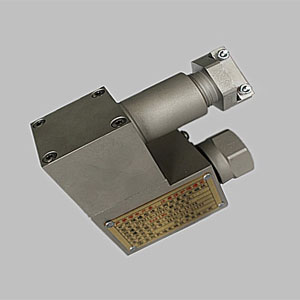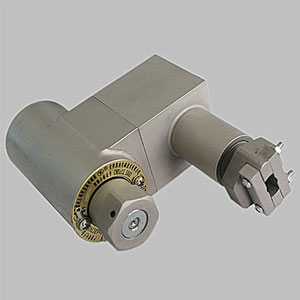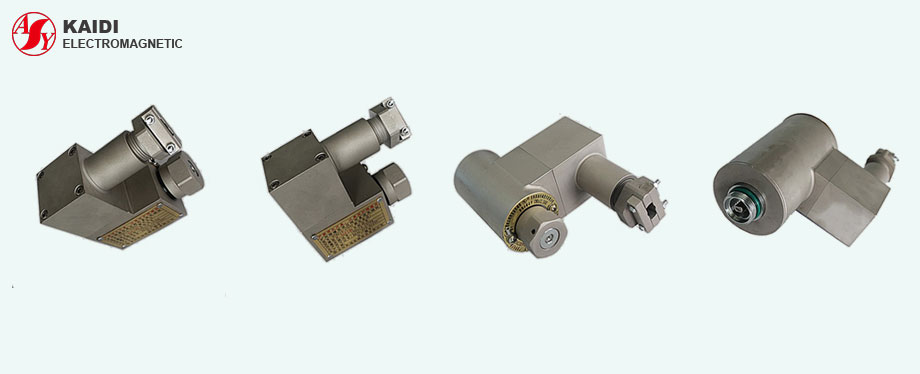Solenoid is an application of the current magnetic effect (electromagnetism), which is closely linked to our lives. As we all know, solenoid is agriculture, chemical industry and other fields. Common types of solenoid include on-off solenoid, proportional solenoid, etc. Explosion proof solenoid is another typical application among all kinds of solenoid. Along with automation in petroleum and chemical industry and expanding of its production scale, the demand for explosion-proof solenoid increase gradually. As its name suggested, explosion-proof solenoid is used for transfer flammable and explosive medium or explosion-hazardous areas. There are some differences in explosion-proof solenoid choosing.
What is an explosive environment?
Explosion-proof solenoid, also known as flame proof solenoid, it is applied in some dangerous environment like explosive and flammable environment. Firstly, we need to know what the explosive environment is. The explosive environment is. An explosive atmosphere means air, steam or mist of combustible material and air mixture. After igniting, the combustion will spread throughout the unburned mixture of the environment. If we have to work in this environment, we need to use the explosion-proof equipment.
Generally, the Explosion proof grade has two levels. One refers to the electrical equipment can be used in Coal mine environment ( Exd I), and another refers to all electrical equipment can be used in all explosive environment other than coal mines( Exd II )
How to choose explosion proof solenoid?
Explosion-proof solenoid is a necessary part of explosion proof valve. Explosion proof valve consist of explosion-proof solenoid and valve body. Valve body generally adopts metal materials, which belongs to difficult-flammable materials. Explosion-proof solenoid requires electricity consumption and cause heat of solenoid, improper use of solenoid will result in unnecessary risk. Full guide of solenoid can help users to learn explosion proof solenoid well, and also be helpful to select proper solenoid.
Standard for explosion-proof solenoid
By the requirement of international standard, for special environment, explosion-proof solenoid should reach relative anti-hazard classification. Normally, standard for explosion-proof solenoid is made up of four parts: ex mark, methods of safety protection, using region, temperature grade.
- Methods of safety protection: Exd, Exia, Exme, Exo, Exq and Ex m.
- Using region: Ⅰfor mine use, Ⅱfor all explosive atmosphere but mine.
Explosion-proof solenoid installation notes
- The installation, use and maintenance of explosion-proof solenoid should fully comply with instruction, and follow relative requirements. Explosion-proof solenoid should be applied in the range of authenticated and allowable environment. Besides some installation tips on dangerous environment is also vital.
- Before installation, check the power supply, voltage and integrity of lead-in cable.
- During the inspection or maintenance of explosion proof solenoid, firstly cut off power, one minutes later, you can open it. Pay attention to the grounding section.
- For an explosion proof solenoid, the lead-in cable is core wire, and black or yellow, green double color line is usually grounding.
- In some hazardous areas, lead-in cable should use explosion-proof box with same protection grade as transitional section.
Recommended explosion proof solenoid
Kaidi is a solenoid supplier with 60 years’ experience in manufacturing various types of solenoid, including on-off solenoid, proportion solenoid, explosion proof solenoid and custom solenoid.
First, we will introduce some explosion-proof solenoids which reach the level Exd I Mb.
Explosion-Proof Solenoid DTBZ-37FYC
| Model | DTBZ-37FYC | Image |
| Dimensions (mm) | 110*120*45 |  |
| Voltage Specifications (V) | DC24 | |
| Rated Force (N) | 37 | |
| Rated Stroke (mm) | 2.8 | |
| Rated Power (W) | 18 |
Explosion-Proof Solenoid DTBZ-90FYC
| Model | DTBZ-90FYC | Image |
| Dimensions (mm) | 125*137*63 |  |
| Voltage Specifications (V) | DC24 | |
| Rated Force (N) | 90 | |
| Rated Stroke (mm) | 4 | |
| Rated Power (W) | 36 |
Except solenoid types we mentioned, there are some explosion-proof solenoids which can be used in chemical environment, and these explosion-proof solenoids can reach the level–Exd I Mb and Exd II CT4. The CT4 represents different meaning. C refers to the gas class and T4 refers to the temperature class.
Explosion-Proof Solenoid DTBZ10-37FYC
| Model | DTBZ10-37FYC | Image |
| Dimensions (mm) | 110*45*100 |  |
| Voltage Specifications (V) | DC12, DC24, DC36,AC36,AC127,AC220 | |
| Rated Force (N) | 37 | |
| Rated Stroke (mm) | 2.8 | |
| Rated Power (W) | 22 |
Explosion-Proof Solenoid DTBZ10-90FYC
| Model | DTBZ10-90FYC | Image |
| Dimensions (mm) | 120*63*120 |  |
| Voltage Specifications (V) | DC12, DC24, DC36, AC36, AC127, AC220 | |
| Rated Force (N) | 90 | |
| Rated Stroke (mm) | 4 | |
| Rated Power (W) | 22 |
Explosion-Proof Solenoid DTBZ12-37FYC
| Model | DTBZ12-37FYC | Image |
| Dimensions (mm) | 135*100*45 |  |
| Voltage Specifications (V) | DC12, DC24, DC36, AC36, AC127, AC220 | |
| Rated Force (N) | 37 | |
| Rated Stroke (mm) | 2.8 | |
| Rated Power (W) | 16.5 |
Explosion-Proof Solenoid DTBZ12-90FYC
| Model | DTBZ12-90FYC | Image |
| Dimensions (mm) | 160*120*64 |  |
| Voltage Specifications (V) | DC12, DC24, DC36, AC36, AC127, AC220 | |
| Rated Force (N) | 90 | |
| Rated Stroke (mm) | 4 | |
| Rated Power (W) | 18 |
